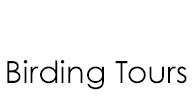When it comes to bird spectacles, the bustling breeding cliffs of Northern Hemisphere seabirds are in a class of their own. And my favorite such cliff is on the Pribilofs on Saint Paul Island–a tiny flyspeck of land in the middle of the vast Bering Sea. It’s one of the first places we visit on our Alaska tour, and the combination of frenetic activity and arm’s length birding makes for a truly unforgettable experience.

The rocky headland of Ridge Wall juts out into the cold sea like the prow of a very tall ship. We leave the warmth of the bus and walk a narrow track toward the water, weaving through colorful patches of emerging Arctic wildflowers. Ahead of us, birds stream back and forth along the edge of the cliff, wings churning. As we reach the headland, the scene expands. All around us, birds flash like flakes in a giant snow globe. Hundreds more dot the surface of the water below. Even when they dive, we can still see them, “flying” through the clear green water in pursuit of prey. A cacophony of sound rises from the colony: the onomatopoeic “kittiwake” of Black-legged Kittiwakes, the high, excited trills of Least Auklets, the throaty, nasal laughter of murres, and the occasional sputtering roar of a distant Northern Fur Seal. The fishy smell of guano hangs heavy in the air. “Smells like birds,”someone quips
Below us, bunched on crowded ledges, Common and Thick-billed murres jostle for position, their beaks pointed skyward. Pairs of Parakeet Auklets squabble over turf. Crested Auklets preen and wag their crests at each other. Red-faced Cormorants add giant mouthfuls of damp vegetation to growing nests. Horned and Tufted puffins doze at burrow entrances, their bright beaks glowing against the dark volcanic rock. Pairs of Northern Fulmars gently nibble each other’s neck feathers. In every direction, birds are doing the things birds do–and our clifftop perch gives us the perfect location from which to watch and photograph.

Once everyone’s gotten a good look at all possible lifers, we can settle down to learning more: about how the various species divvy up the cliff so that each gets its preferred nest site, about the courtship and nesting strategies of the cliff ’s inhabitants, of the subtle differences between Red legged and Black-legged kittiwakes in flight, the best ways to distinguish Common Murres from Thick-billed Murres at a distance, the key field marks for identifying auklets on the water. By the time we leave the island, we’ll have had multiple hours in which to practice and hone our skills.
And we’ll have had multiple hours of enjoying thousands of birds going about their busy lives–feeding, courting, preening, resting–within mere yards of where we stood. In the world of bird spectacles, that’s mighty hard to beat!

Check out our 2012 Alaska tour dates (two departures, each in two parts) by visiting our Alaska tour page. And if you can’t make it to Alaska in June? We have a few other tours that also feature breeding seabird cliffs. Try Scotland: Famous Grouse in the Land of Whisky in April, Ireland in Spring in May, Newfoundland & Nova Scotia in late June, or Spitsbergen & Svalbard Archipelago: A Cruise to the Norwegian Arctic in late June.

